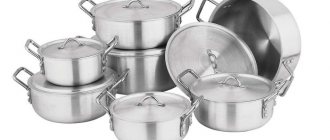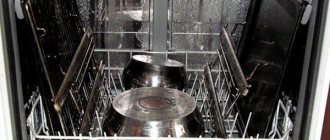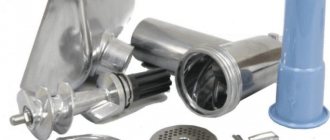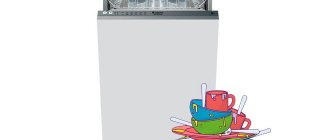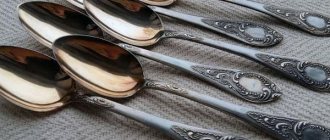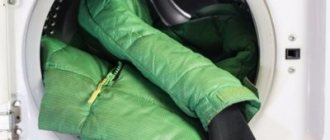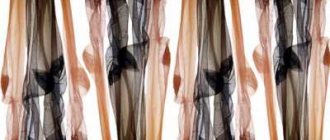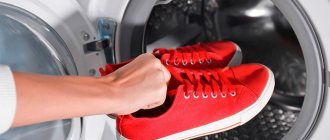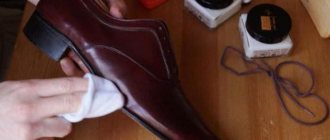Pros and cons of ceramics
Advantages:
- You can regulate the temperature of the food being cooked, as well as control the humidity. This is achieved due to the porosity of the ceramic tableware structure.
- Scale does not form on ceramics, no matter how long it is used.
- You can store various dishes for a long time.
- Food cooked in ceramic dishes has a unique aroma and a richer taste.
- Environmental safety - ceramics do not contain heavy metals; therefore, when exposed to high temperatures, no toxins or carcinogens are released.
Flaws:
- Increased fragility.
- Difficulty in cleaning - ceramics absorb grease.
- Long-lasting aroma of previously prepared food.
- Negative effects of moisture.
Questions and answers: what can and cannot be put in the dishwasher
We answer the most popular questions about which items can be safely washed in the dishwasher, and which are better to clean by hand.
Can pots be washed in the dishwasher?
Yes, if they are made of materials that can withstand active washing: stainless steel, ceramics or glass. Cast iron or Teflon pans must be washed by hand.
Is cast iron dishwasher safe?
No, because washing it in the car will peel off the coating - which is what makes food cooked in cast iron cookware so delicious.
Can aluminum cookware be washed in the dishwasher?
It is also not possible, since aluminum is too soft and susceptible to chemicals.
Can crystal be washed in the dishwasher?
Only if you want to turn it into cloudy glass. In general, it’s impossible. Some machines are equipped with a delicate washing mode at 40 degrees, but no one can guarantee that this will be safe for crystal.
Can clay pots be washed in the dishwasher?
It is possible if they are made of baked clay - that is, ordinary ceramics.
Can pans be washed in the dishwasher?
If they don’t have a Teflon coating or a prohibition sign, then you can.
Types of ceramic tableware
In general, the concept of “ceramic cookware” is very broad. It includes a variety of types and models of kitchen utensils.
The most common types of ceramic tableware:
- Porcelain - created from white clay, is light in weight, and has a beautiful appearance. This is a heat-resistant cookware that is well resistant to various substances. When lightly striking the surface of the porcelain, a high, clear sound can be heard.
- Earthenware - also made from white clay, but it has less strength and heat resistance. This is due to the lower firing temperature.
- Terracotta - made from red clay, after firing it is rarely covered with glaze, so its texture can be different - fine, partially polished, coarse-grained.
As for the models, they are as follows:
- tureens and pots ;
- serving plates ;
- gravy boats;
- spice utensils;
- baking dishes;
- cocotte makers;
- salad bowls and bowls ;
- cups;
- sugar bowls;
- teapots and coffee pots;
- fondue;
- plateau vases.
How a dishwasher works
The dishwasher is equipped with a hot and cold water supply system. Thanks to the use of a large amount of liquid heated to 40 ° C, fat and dried pieces of food are washed off from the dishes, and a significant part of the microbes is removed. The detergent helps in the fight against fat and parasites that are more resistant to high temperatures.
Cleansing is carried out in several stages:
- rinsing dishes;
- supplying liquid with dissolved dishwashing detergent;
- repeated rinsing with clean water.
Some dishwashers have a drying function added.
How to properly wash ceramic dishes
Main rules of care:
- After washing, the surface not covered with enamel must be wiped dry, otherwise the moisture will not evaporate and will penetrate into the dish during cooking.
- To remove the smell from ceramics, you need to soak the dishes for a few minutes in cold salted water and then wash them well.
- If possible, you should store washed dishes outdoors; you should also avoid placing plates or mugs on top of each other. If you don't have space, you need to place napkins between the plates and only then stack them on top of each other. Otherwise, there is a risk of scratching the top layer of objects.
- Do not use metal or abrasive sponges when washing, as they can damage the top protective layer of the dishes. For the same reason, it is advisable to remove the rings from your hands when washing.
- Do not soak dishes in hot water - this may ruin their design.
- Ceramics are sensitive to sudden temperature changes, so immediately after cooking you should not place the dishes under cold water; first you need to let them cool.
- Coffee stains from ceramics can be easily removed with a cotton swab dipped in vinegar.
- To restore the whiteness of the dishes, you need to walk over them with a soft cloth dipped in tartaric acid.
Recommendations
The dishwasher, like any household appliance, needs proper care. When operating, do not overload the machine, as this may damage it. To avoid filter clogging, food residues should be removed from kitchen utensils before loading. Do not use detergents that are not intended for automatic machines when washing dishes. To eliminate unpleasant odors, it is recommended to periodically wash the filters and run the dishwasher without dishes, and also wipe the walls of the unit with a vinegar solution.
Improper use may cause machine parts to break or damage kitchen utensils. Before loading the dishes, it is recommended that you read the instructions in detail and look at the symbols on the packaging.
Stages of the washing process
What pots should absolutely not be loaded into the hopper? This primarily applies to aluminum ones - they will oxidize and their appearance will deteriorate. You should also avoid washing cast iron items and utensils with wooden handles. All others tolerate machine washing just fine, especially if there is a permit sign on the label.
To generally understand what can and cannot be washed in a dishwasher, it’s worth finding out what the washing process looks like from the inside:
- After startup, cold or hot water (depending on the model) enters the tank.
- The water is heated to a maximum of 70 degrees.
- The dispenser discharges the cleaning solution into a tank of heated water.
- From the tank it is supplied to nozzles, which evenly distribute the spray throughout the dishes.
- Water circulates through the bunker for half an hour.
- At the end of the first washing cycle, it, with the dissolved detergent, is drained into the sewer, and water for rinsing already enters the reservoir.
- Modern PMM models are equipped with gentle cycles in which the water temperature remains low. These modes are only suitable for lightly soiled dishes.
We can conclude: it is unlikely that you will be able to clean dishes with carbon deposits or heavy dirt. If the pots are too dirty, you need to clean them with a brush and abrasive chemicals to make them shiny. And reviews from housewives confirm that dishes in which porridge has burned or vegetables have been cooked for a long time are not washed perfectly.
Additional uses
There are a number of items that are not kitchen utensils that can also be washed in the dishwasher. This:
- refrigerator shelves;
- filters for ventilation, hoods, vacuum cleaners;
- ice molds;
- lunch boxes;
- Lego parts (small ones need to be placed in a special bag for washing clothes);
- car carpets;
- baby dishes, bottles, pacifiers (do not use powder);
- grates from the stove;
- lamp shades;
- baking mats;
- mop heads, toilet brushes;
- dustpans, brushes;
- kitchen sponges, soft sponges;
- makeup brushes, combs;
- caps, baseball caps;
- jewelry, hair ties (must be placed in a special box so that they do not get lost or get clogged in machine parts);
- rubber shoes (flip-flops, boots, sandals);
- bowls, rubber pet toys;
- dog leashes and collars.
As an advice
As it became clear, the dishwasher, although a great invention, is still far from a universal tool. You cannot wash everything you want in it, since the rules contain a large list of restrictions. But over time, all the nuances become clear and taken into account, leading to a partial replacement of the utensils in the kitchen.
For a clearer understanding, below is a list of materials divided into categories depending on their tolerance to the extreme environment of the dishwasher.
| absolutely not possible | undesirable | allowed |
| aluminum | thin crystal | crystal |
| silver | thermos | ceramics |
| copper | knives | plastic |
| cupronickel | cast iron | children's dishes |
| multicooker bowl | pan | |
| tree | stainless steel | |
| porcelain | ||
| clay | ||
| enamel |
Top 1. Borisov ceramics "Standard"
Rating (2021): 4.58
1054 reviews from resources were taken into account: Yandex.Market, Otzovik, OZON, Wildberries
Optimal price-quality ratio Less than 700 rubles. You will receive high-quality portioned pots of optimal size made of durable ceramics with thick walls and comfortable handles.
- Characteristics
Average price: from 689 rub.
- Country Russia
- Volume: 500 ml
- Contents: 4 pcs.
- Height: 10.4 cm
- Diameter: 9.5 cm
The “Standard” set from “Borisov Ceramics” includes four pots with lids, where each element is made of high-quality ceramics and covered with a glossy glaze. Thanks to the thick walls and unique properties of red clay, the “Russian oven effect” is achieved during cooking and the dishes are as tender, juicy and aromatic as possible. The products here are heated evenly and do not burn even without the use of oil, so this is an ideal option for baking meat, potatoes and any vegetables. The products have an optimal volume of 500 milliliters. This is just one serving for an adult. The handles are small, but grippy - they don’t slip out of the oven mitts. But the lids, judging by the reviews, are not very comfortable and can slip off.
Advantages and disadvantages
- Quality materials
- Thick walls
- Optimal size
- Comfortable handles
- Hot lids may slip out of oven mitts.
See also:
- 10 Best Springform Baking Pans
to the beginning of the rating
The best ceramic baking pots
Ceramics are a mixture of various materials: clay, kaolin, feldspar, quartz. Finished products are fired at high temperatures and covered with glaze for greater durability. As a result, the structure is more durable than, for example, clay analogues, but it is better to avoid temperature changes. Housewives do not recommend placing ceramic containers in a preheated oven, as the coating may crack. In addition, this material absorbs food odors and fats, so it is better to have a separate pot for each type of dish.
Top 4. Elan Gallery TerraCotta
Rating (2021): 4.49
119 reviews from resources taken into account: OZON, Wildberries
High quality Buyers highly appreciated the quality of the pots: they are made of high-quality ceramics and covered with heat-resistant glaze. Each element is made very carefully, due to which the products look aesthetically pleasing and noble. The grip, judging by the reviews, is also reliable and with its help you can easily remove containers of food from the oven.
- Characteristics
Average price: from 1100 rub.
- Country Russia
- Volume: 600 ml
- Contents: 3 pcs., grip
- Height: 12.5 cm
- Diameter: 12 cm
An excellent option for preparing dishes from potatoes, meat, mushrooms, vegetables or fish. The set consists of 3 serving vessels of 600 ml and a grip. The containers themselves are made of heat-resistant ceramics and look very aesthetically pleasing. Cooked food can be immediately served on the table, removed using a convenient grip. Judging by the reviews, cooking with them is a pleasure: the food is perfectly baked, nothing burns, and the taste is simply excellent. The quality is excellent, plus it is dishwasher safe. Available in several colors, so everyone will find an option to their liking. No serious deficiencies were found.
Advantages and disadvantages
- High-quality materials, good assembly
- Roomy
- Easy to wash both by hand and in the dishwasher
- Several colors
- No deficiencies found
Proper care of clay pots
After we have figured out whether clay pots can be washed in the dishwasher or not, we need to understand how best to care for them. Many housewives say that such dishes are very picky about care, so they prefer not to use them. To some extent this is true.
Here are the basic rules for caring for clay pots:
- Clay pots and dishes made from this material cannot tolerate household chemicals. She has a particular dislike for any detergents. Even the safest and most environmentally friendly dishwashing gel is firmly absorbed by the clay, and then the chemicals permeate the food.
- You cannot put cold food in a pot and then put it in a hot oven. This will cause the dishes to burst due to temperature changes. The same can be said about washing. Sudden temperature changes should be avoided here.
- If you need to clean the pot from burnt food, you will have to use a brush and warm water. You can add a little soda. You should avoid cleaning with vinegar.
- When the pot is saturated with vegetable juice or with chemicals during the previous cleaning, you can try to clean the dishes. You need to pour salt into it and put it in a preheating oven. Over time, the salt will heat up and absorb all the dirt. It takes about an hour to bake.
- You should not put clay dishes into storage without making sure that they are thoroughly dry. This may cause mold to form. And if this does happen, then you can clean the pot with a brush and a slurry of wet baking soda.
- Before using the pot, you need to immerse it in water for an hour or two.
- Plain soap without fragrances is suitable for washing.
- Some housewives share a washing method that has been known since ancient times: you can clean a clay pot using sand or ash.
To summarize, we can say that you should not use a dishwasher to wash pottery, especially when there is no special coating to protect the pot. Ignoring this simple rule will lead to damage to both the dishes themselves and the dishwasher.
